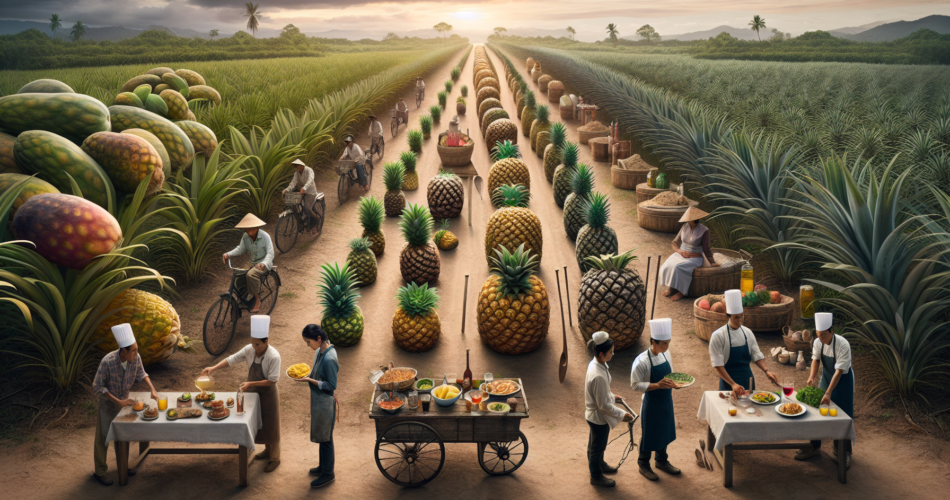The journey of pineapples from the field to the consumer’s table is a complex process that spans approximately two years. This journey involves meticulous agricultural practices, logistical planning, and supply chain coordination that ensure the fruit maintains its quality and freshness. In this article, we will explore the agricultural process of cultivating pineapples and the intricate dynamics of the supply chain that bring this tropical delight to markets worldwide.
The Agricultural Process: Cultivating Pineapples for Market
Cultivating pineapples begins with the selection of high-quality planting materials, typically healthy suckers from mature plants. Farmers choose a suitable planting site with adequate sunlight, well-drained soil, and access to water, as these factors significantly influence the yield and quality of the fruit. Once the suckers are planted, they require attentive care over the next year-and-a-half, involving regular weeding, fertilization, and pest control. This meticulous cultivation process is essential, as pineapples are sensitive to their environment and can be adversely affected by poor agricultural practices.
The growth cycle of a pineapple plant is lengthy and requires patience. After approximately 12 to 20 months, the plant reaches maturity and produces a flower, which eventually develops into the pineapple fruit. Farmers monitor the growth closely, as timing the harvest is crucial. Picking the fruit too early can result in a lack of sweetness, while waiting too long can lead to overripening. This period of cultivation emphasizes the importance of understanding the plant’s development stages and the environmental factors that can influence them.
Once harvested, the pineapples undergo a rigorous quality control process. Workers inspect the fruits for size, color, and firmness, ensuring that only the best specimens are selected for market. The harvested pineapples are then sorted, graded, and packed carefully to prevent bruising during transport. This attention to detail during the agricultural process not only maximizes the yield but also sets the foundation for the consumer experience, ensuring that the fruit arrives at its destination in optimal condition.
Supply Chain Dynamics: From Harvest to Consumer Plate
The transportation of pineapples from farms to consumers involves a sophisticated supply chain that must navigate various logistical challenges. Once harvested, the pineapples are transported to packing facilities, where they are cleaned, sorted, and packaged for distribution. The geographic origins of pineapples, often found in tropical regions, create a need for efficient transport systems that can handle the perishable nature of the fruit. This process often involves a combination of land and sea freight, with careful temperature controls to preserve freshness.
After packaging, the pineapples are sent to distribution centers, where they are stored temporarily before being dispatched to retailers. The timing of this transfer is critical; retailers rely heavily on just-in-time inventory systems to minimize waste and maximize freshness. Effective communication and coordination among growers, packers, and distributors are vital in this phase, as delays can compromise the quality of the fruit and ultimately affect consumer satisfaction.
Finally, when the pineapples reach grocery stores or local markets, they enter the hands of consumers. At this stage, the supply chain’s effectiveness becomes evident in the quality of the fruit available. Consumers have become increasingly conscientious about the origins of their food, influencing purchasing decisions based on freshness and sustainability. As awareness of the pineapple’s journey from field to table grows, it highlights the interconnectedness of agriculture, logistics, and consumer behavior in shaping food systems globally.
The two-year journey of pineapples from field to table embodies a blend of agricultural expertise and intricate supply chain dynamics. The dedication of farmers in cultivating high-quality pineapples, combined with the logistical prowess required to transport them efficiently, ultimately delivers a product that consumers can enjoy. As global demand for fresh produce continues to rise, understanding the complexities behind our food systems becomes essential, reinforcing the value of sustainable practices and responsible consumption in today’s world.

